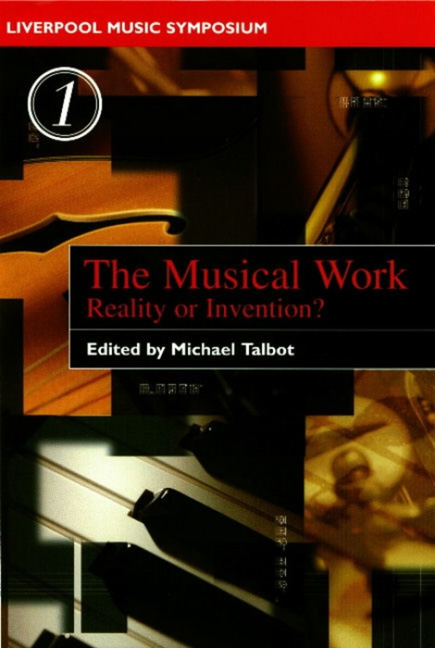Book contents
- Frontmatter
- Contents
- Notes on Contributors
- Introduction
- 1 Some Thoughts on the Work in Popular Music
- 2 Intertextuality and Hypertextuality in Recorded Popular Music
- 3 Work-in(g)-Practice: Configurations of the Popular Music Intertext
- 4 Work and Recordings: The Impact of Commercialisation and Digitalisation
- 5 The Practice of Early-Nineteenth-Century Pianism
- 6 Looking Back at Ourselves: The Problem with the Musical Work-Concept
- 7 ‘The Work’: An Evaluative Charge
- 8 The Work-Concept and Composer-Centredness
- 9 The Musical Artwork and its Materials in the Music and Aesthetics of Busoni
- 10 Re-composing Schubert
- 11 ‘On the Problems of Dating’ or ‘Looking Backward and Forward with Strohm’
- Index of Musical Compositions and Collections
- Index of Personal Names
9 - The Musical Artwork and its Materials in the Music and Aesthetics of Busoni
- Frontmatter
- Contents
- Notes on Contributors
- Introduction
- 1 Some Thoughts on the Work in Popular Music
- 2 Intertextuality and Hypertextuality in Recorded Popular Music
- 3 Work-in(g)-Practice: Configurations of the Popular Music Intertext
- 4 Work and Recordings: The Impact of Commercialisation and Digitalisation
- 5 The Practice of Early-Nineteenth-Century Pianism
- 6 Looking Back at Ourselves: The Problem with the Musical Work-Concept
- 7 ‘The Work’: An Evaluative Charge
- 8 The Work-Concept and Composer-Centredness
- 9 The Musical Artwork and its Materials in the Music and Aesthetics of Busoni
- 10 Re-composing Schubert
- 11 ‘On the Problems of Dating’ or ‘Looking Backward and Forward with Strohm’
- Index of Musical Compositions and Collections
- Index of Personal Names
Summary
Any consideration of the history of the musical artwork that attempts to take full account of its weakening in the twentieth century eventually has to confront the apparently marginal case of Ferruccio Busoni. In his writings, which closely follow his compositional practice, the nineteenth-century cult of the genius and the figure of the composer-performer generate a picture of the musical artwork that follows in a Platonic tradition but with bewildering contradictions that point to the progressive weakening of the concept in the twentieth century. On one level, Busoni illustrates in his music and aesthetics the first implications of a general phenomenon best encapsulated by Carl Dahlhaus: ‘… since the late eighteenth century all genres have rapidly lost substance. … every genre fades to an abstract generalisation, derived from individual structures after they have accumulated; and finally, in the twentieth century, individual structures submit only under duress to being allocated to any genre’. Hardly less relevant is Busoni's confusion of the roles of editor, transcriber and composer, whereby a ‘work’ may be a variant, completion or complete rethinking of a pre-existing work. Albrecht Riethmüller illustrates this confounding of categories principally from Busoni's reaction to, and treatment of, the music of J. S. Bach, but transcription and recomposition also overlap with aesthetically indeterminate results in Busoni's attitude to his own music. Both are particular instances of a more fundamental problem perceived by Riethmüller:
In the understanding of the nineteenth century and of the twentieth until now the first and most essential requirement of a composition is that it be new and original, further, that it be attributable to a particular author who fulfils this aesthetic postulate of newness and originality. Even these few fundamental requirements begin to totter when one turns to Busoni.
Whether Busoni would have recognised his importance in this generalisation is open to debate. It is arguable that his aesthetic writings brought together a number of strains that taken separately do not seriously fly in the face of common assumptions held in his lifetime. It is only when he placed them thus in somewhat startling juxtaposition that the ideas acquired tension and even discord. As Bojan Bujić has noted, his most substantial aesthetic work, Entwurf einer neuen Ästhetik der Tonkunst, ‘is an example of a fine artistic intuition rather than of systematic thought’.
- Type
- Chapter
- Information
- The Musical WorkReality or Invention?, pp. 187 - 204Publisher: Liverpool University PressPrint publication year: 2000



